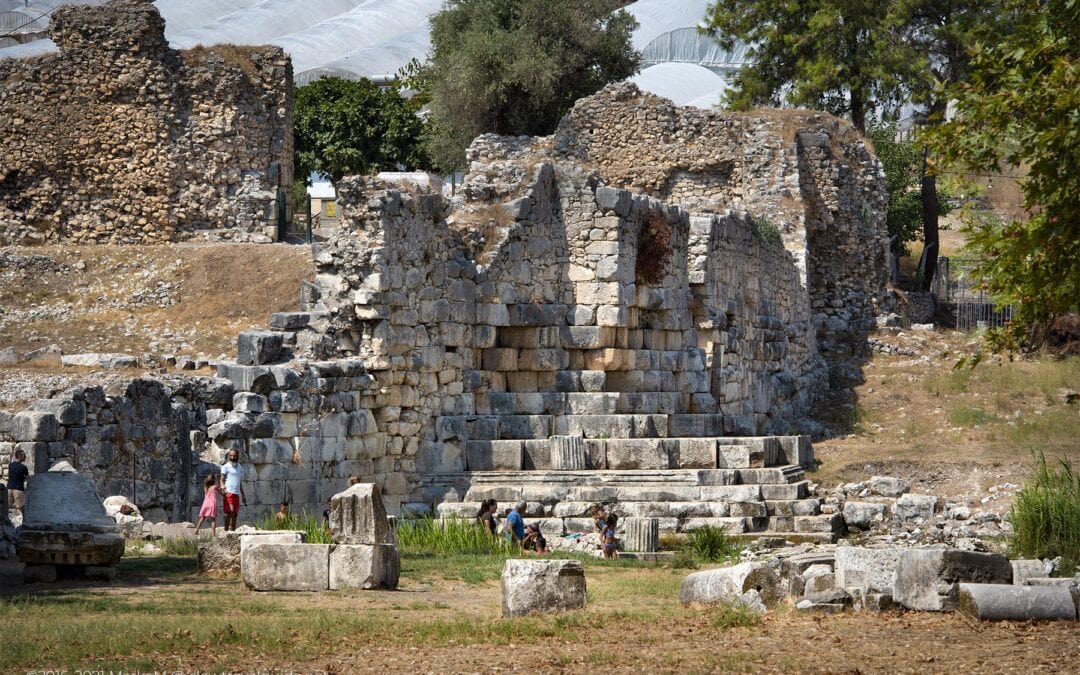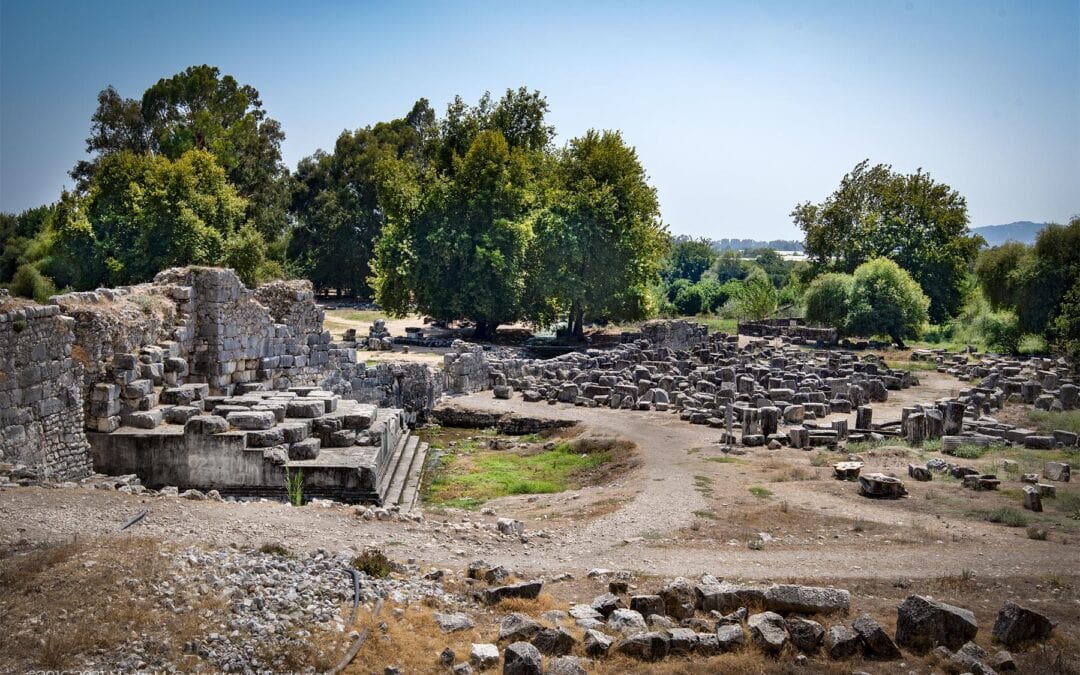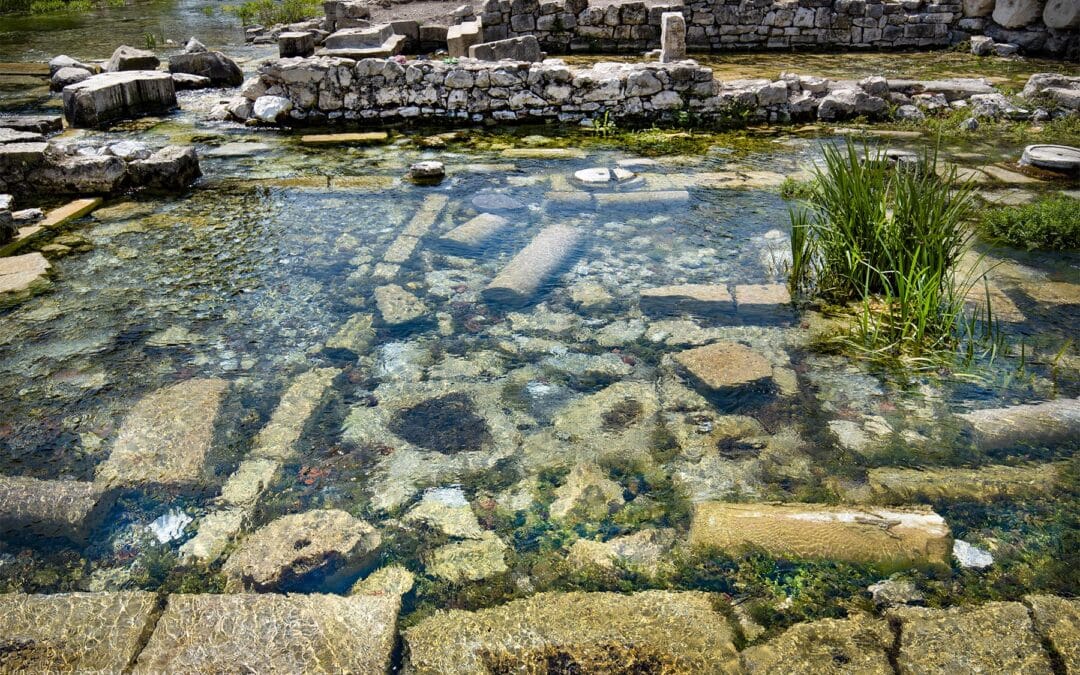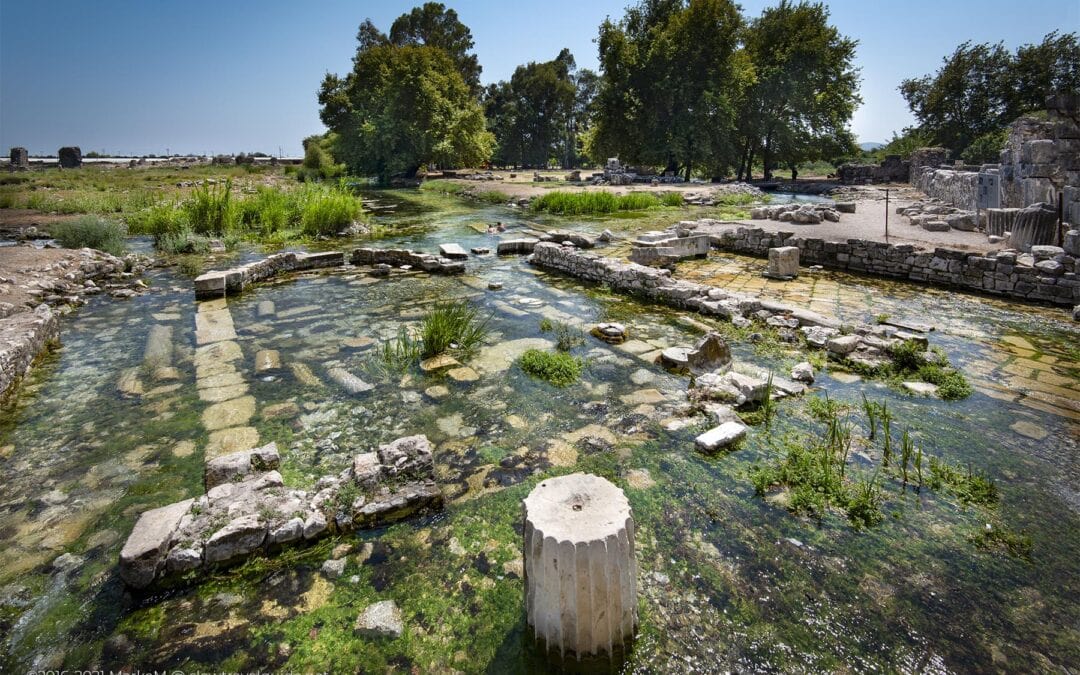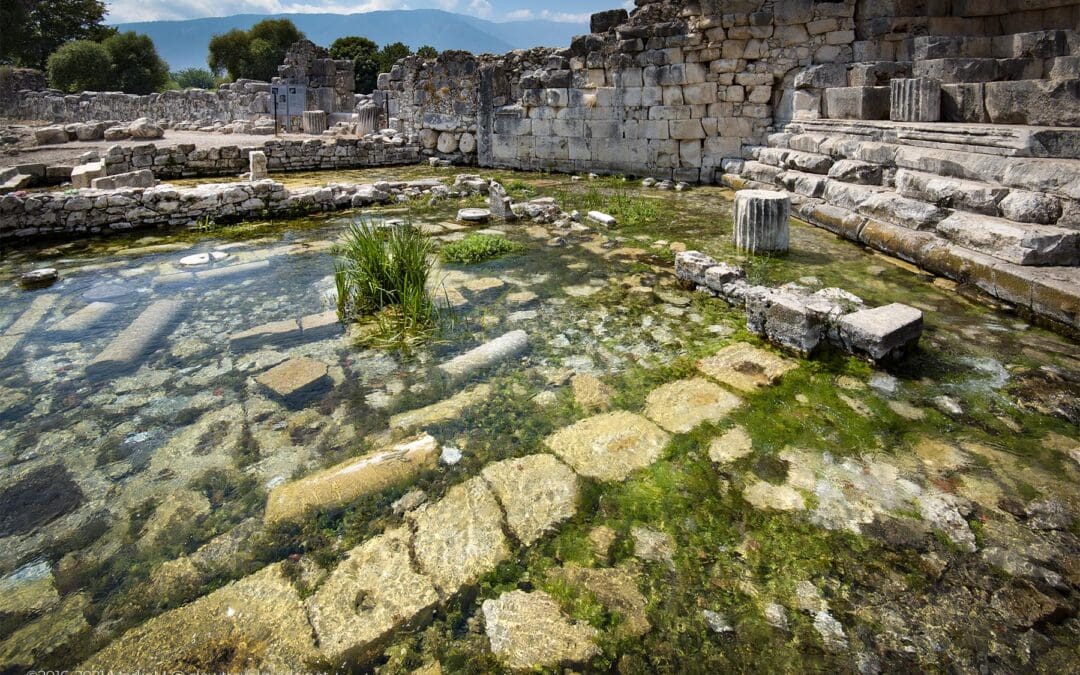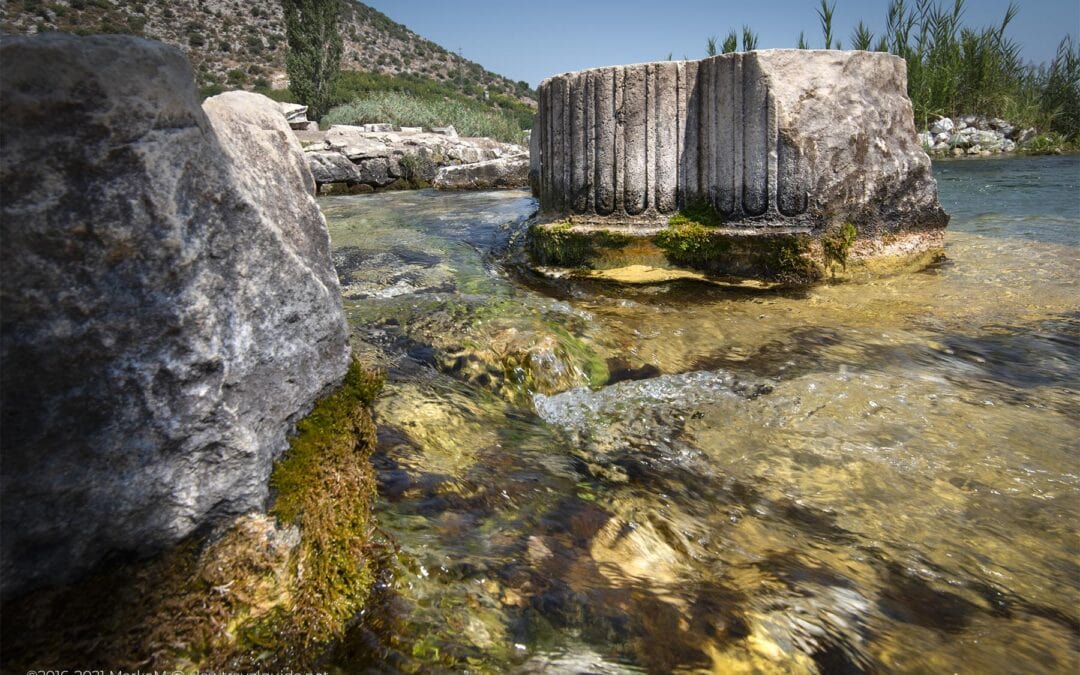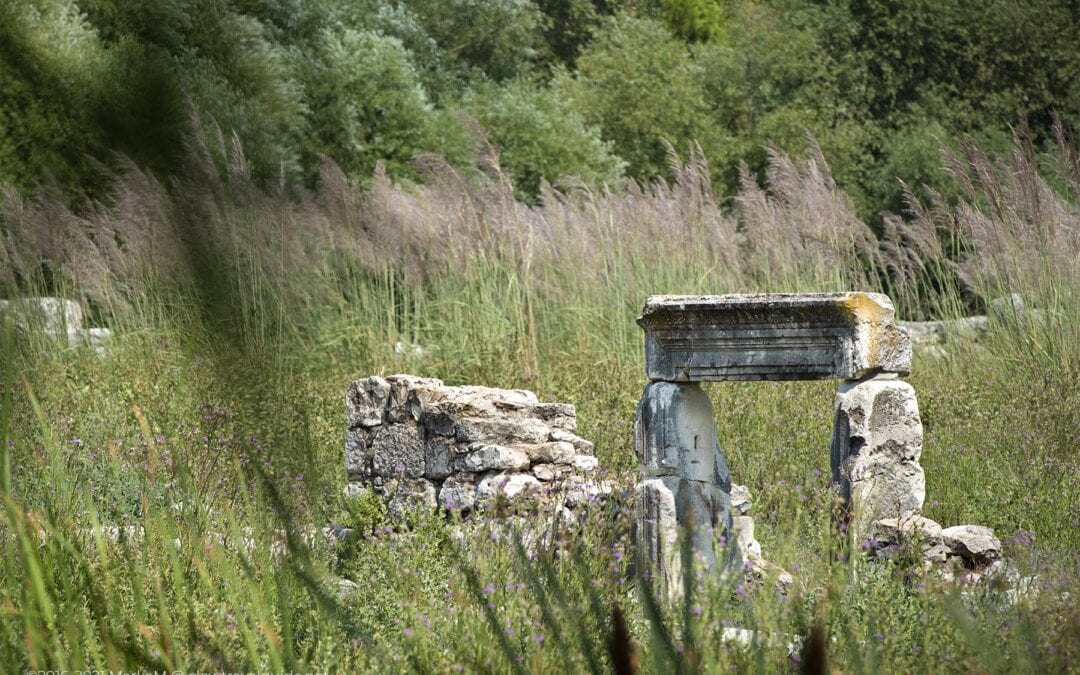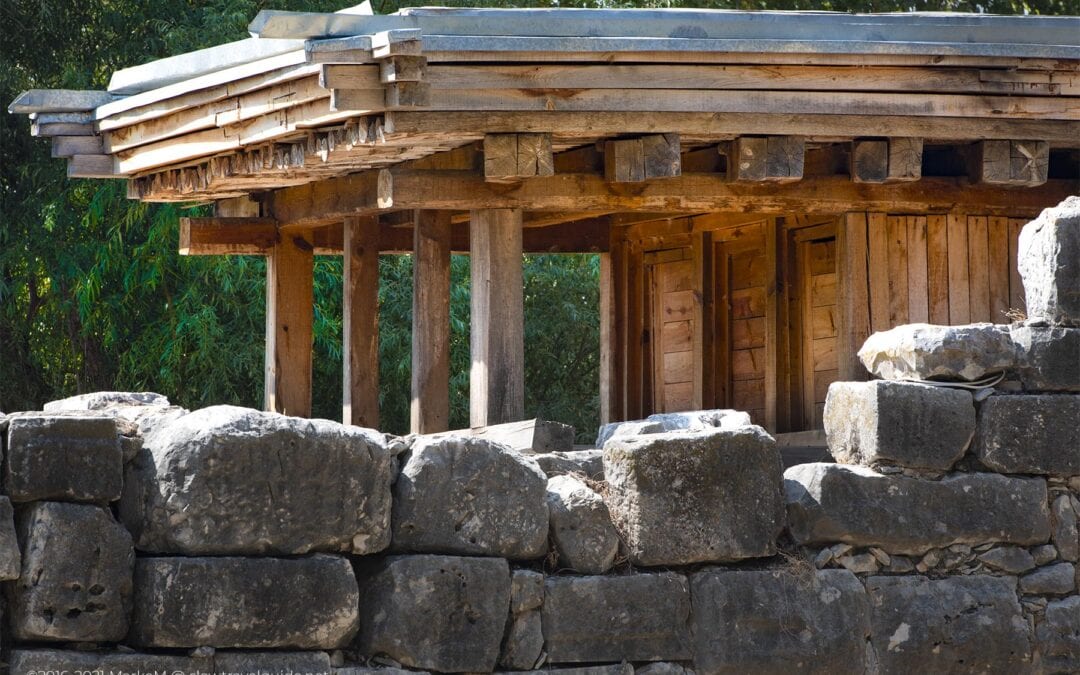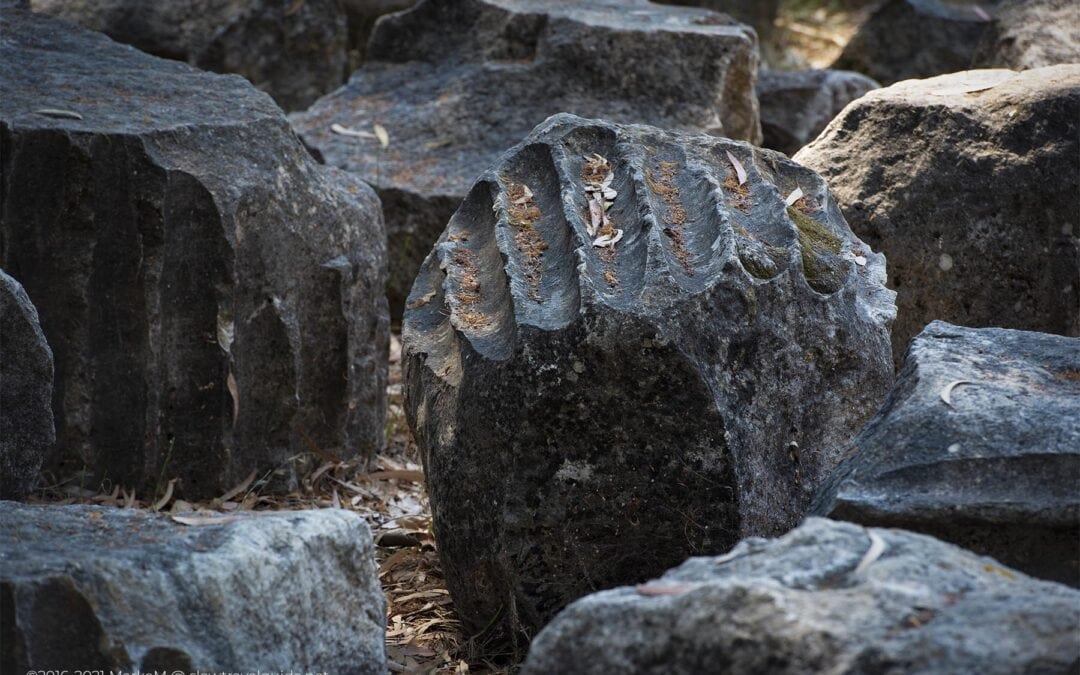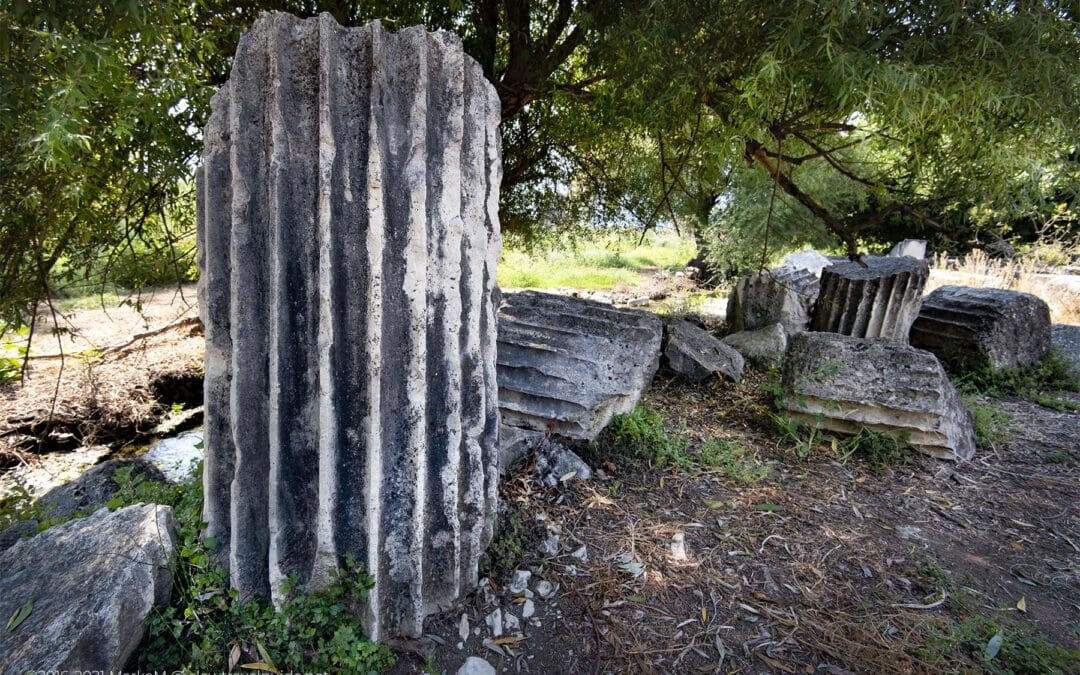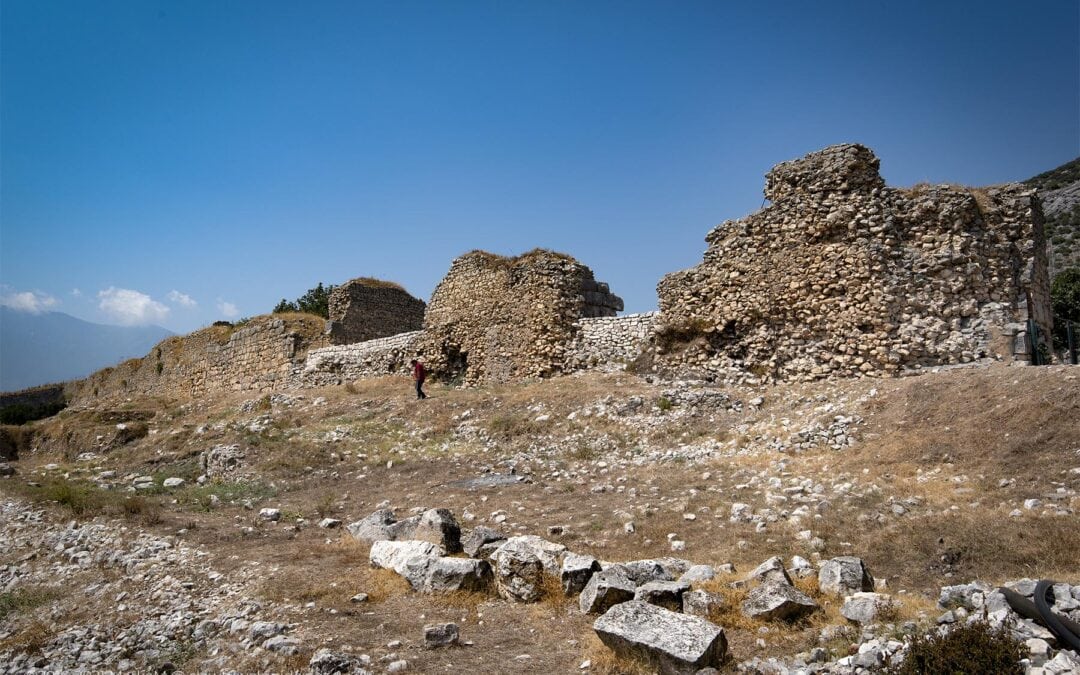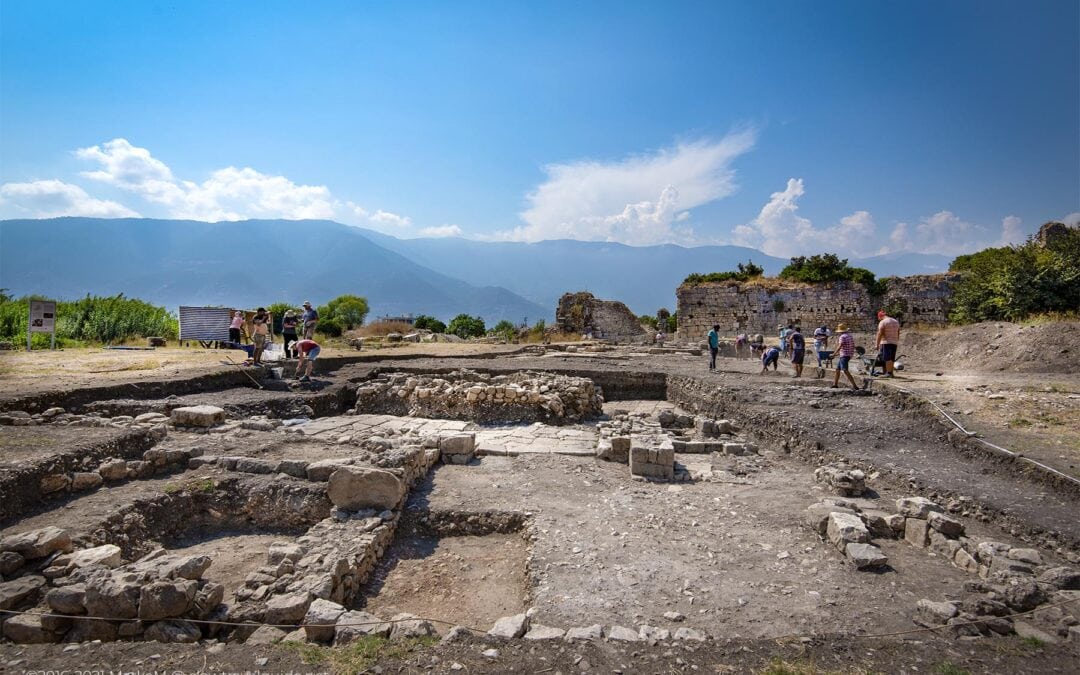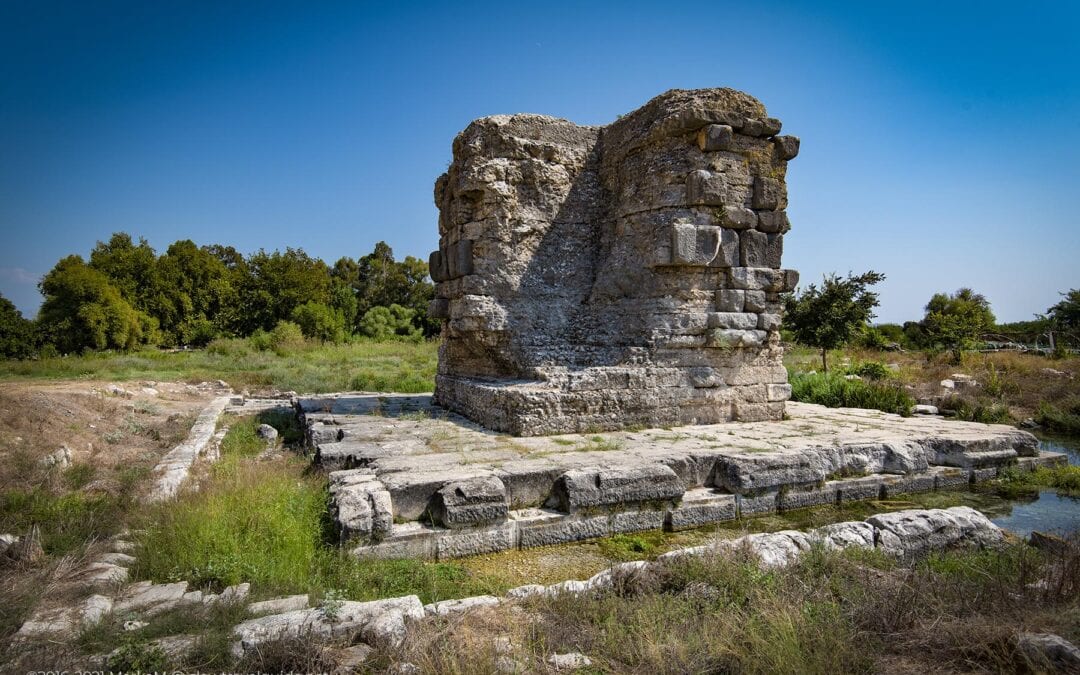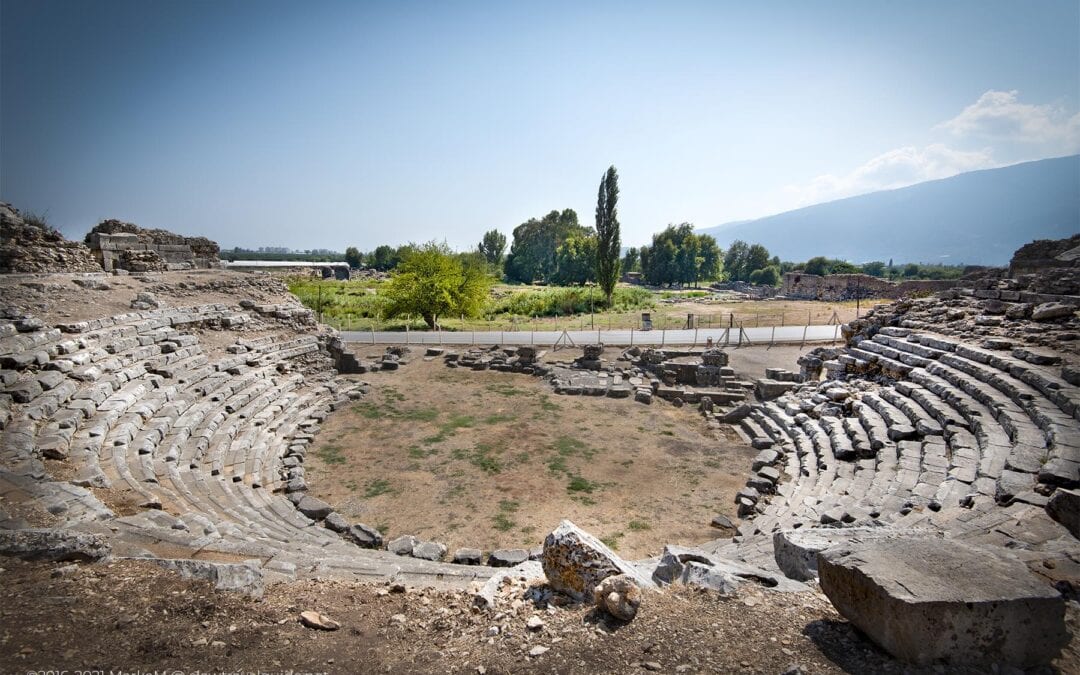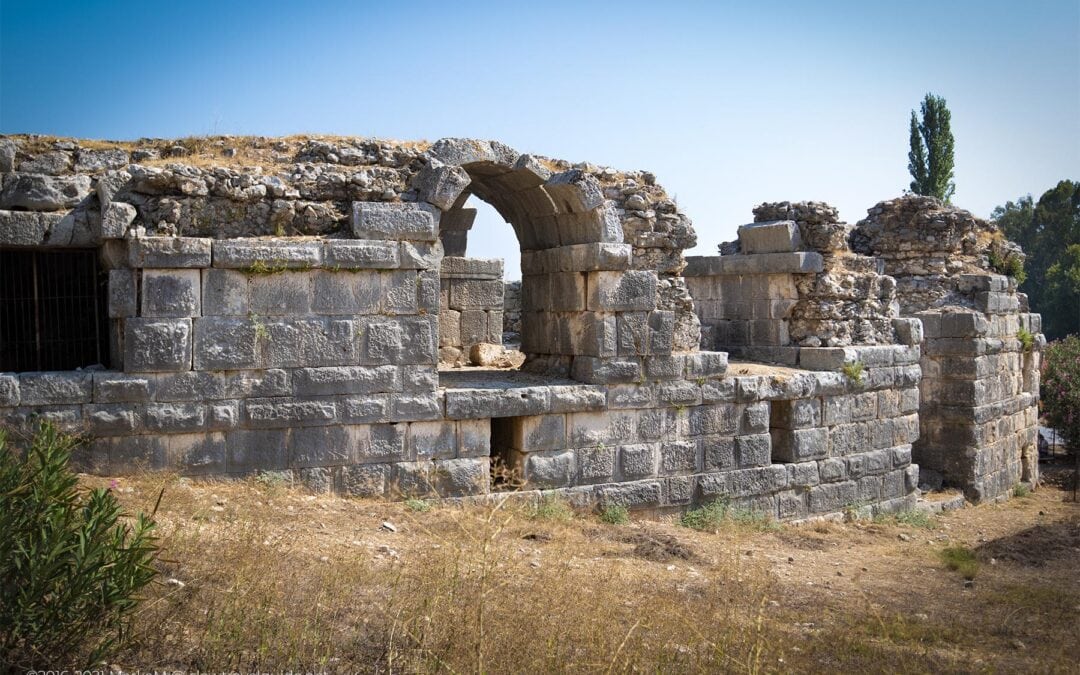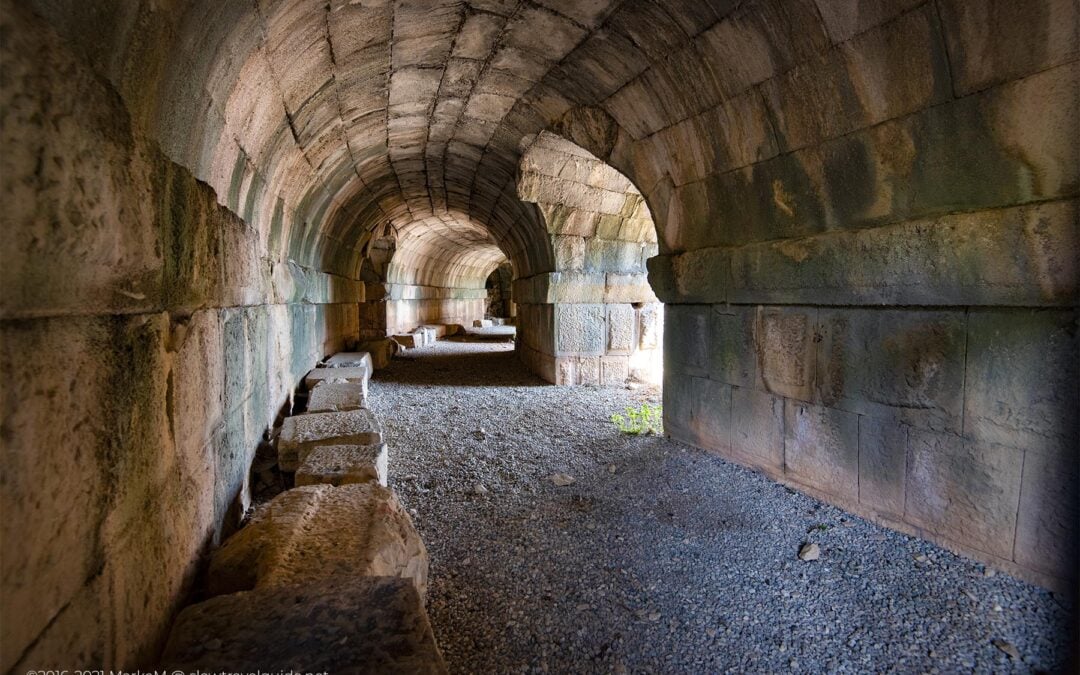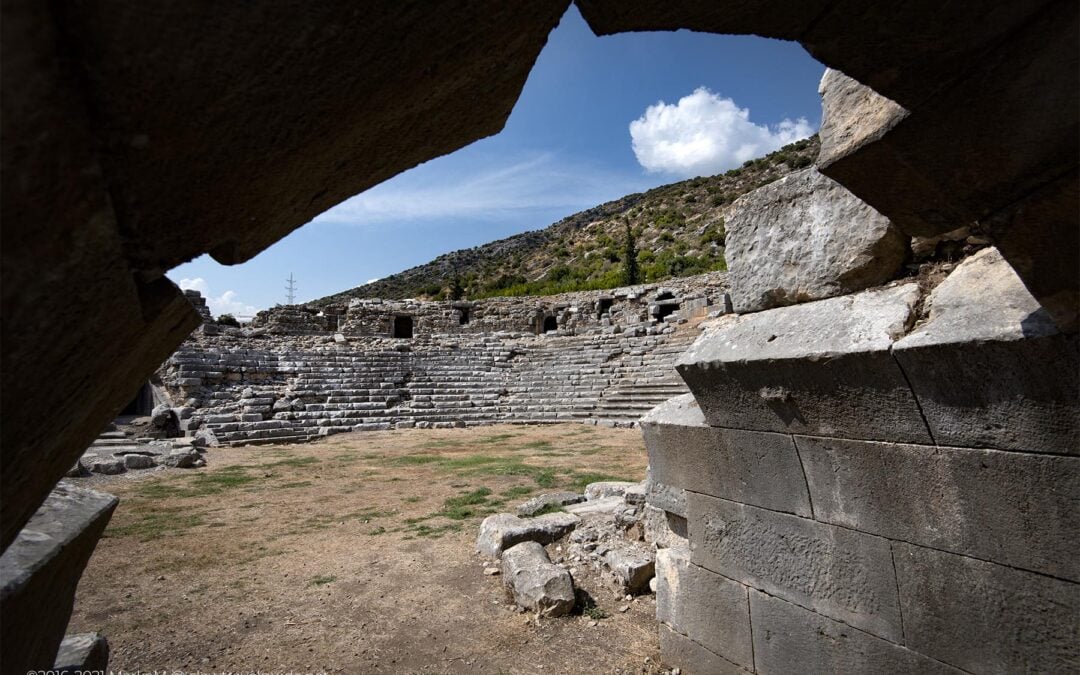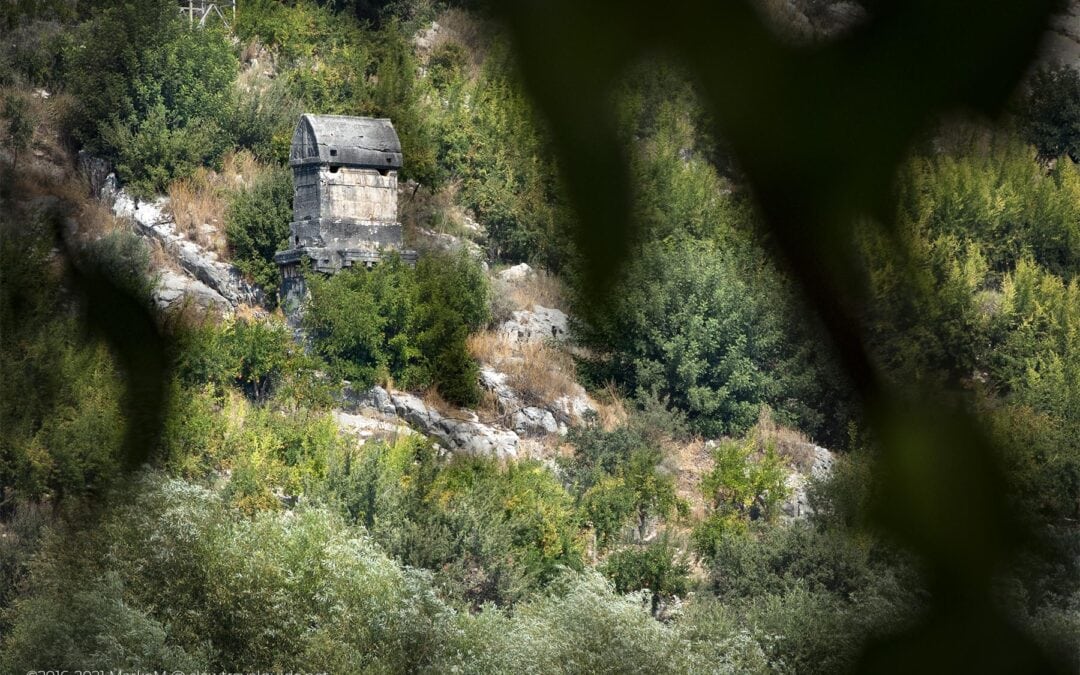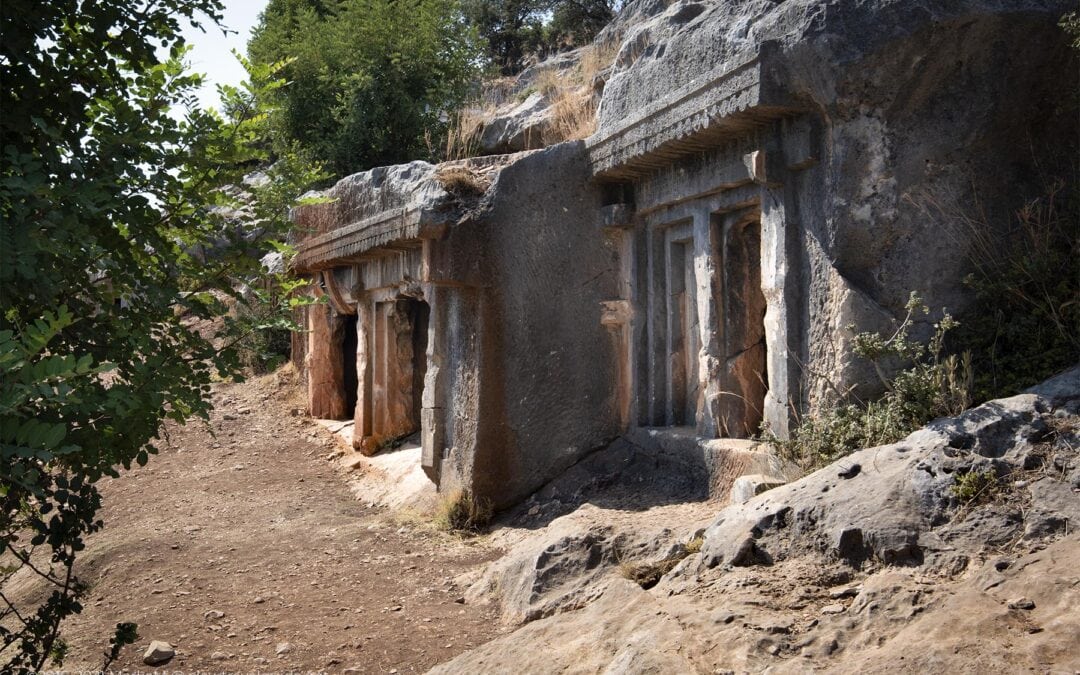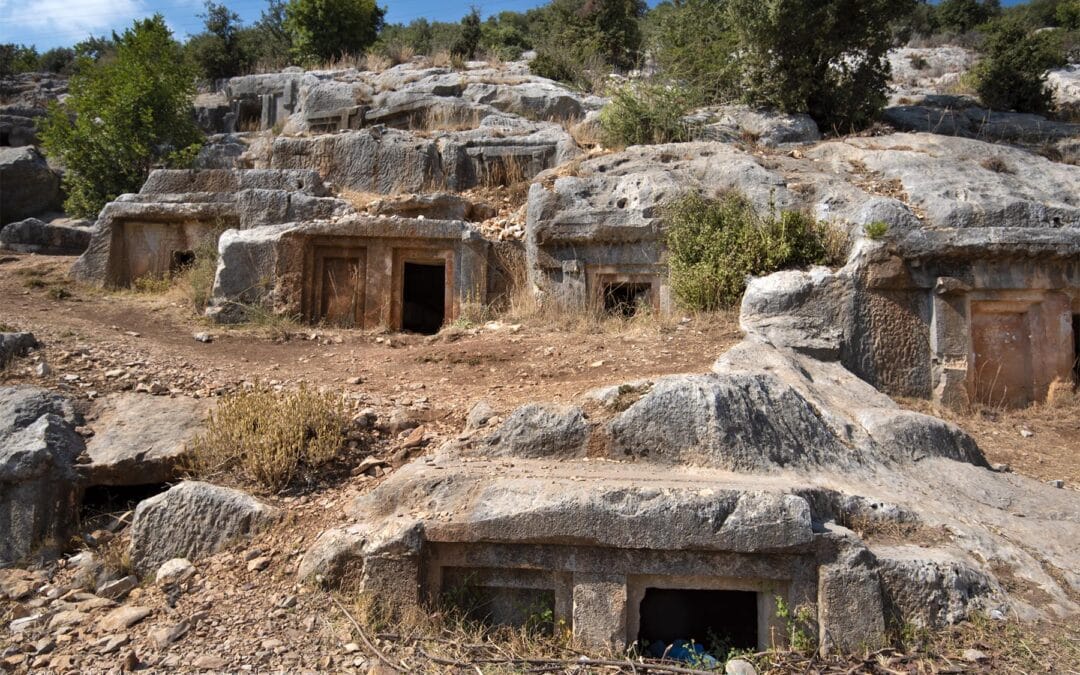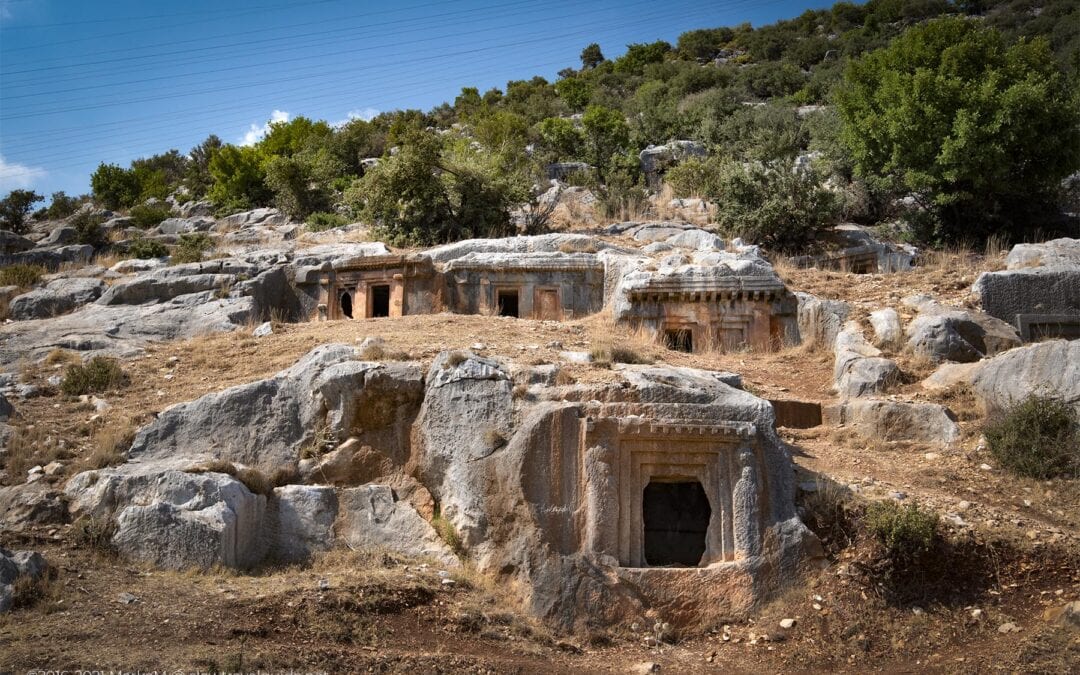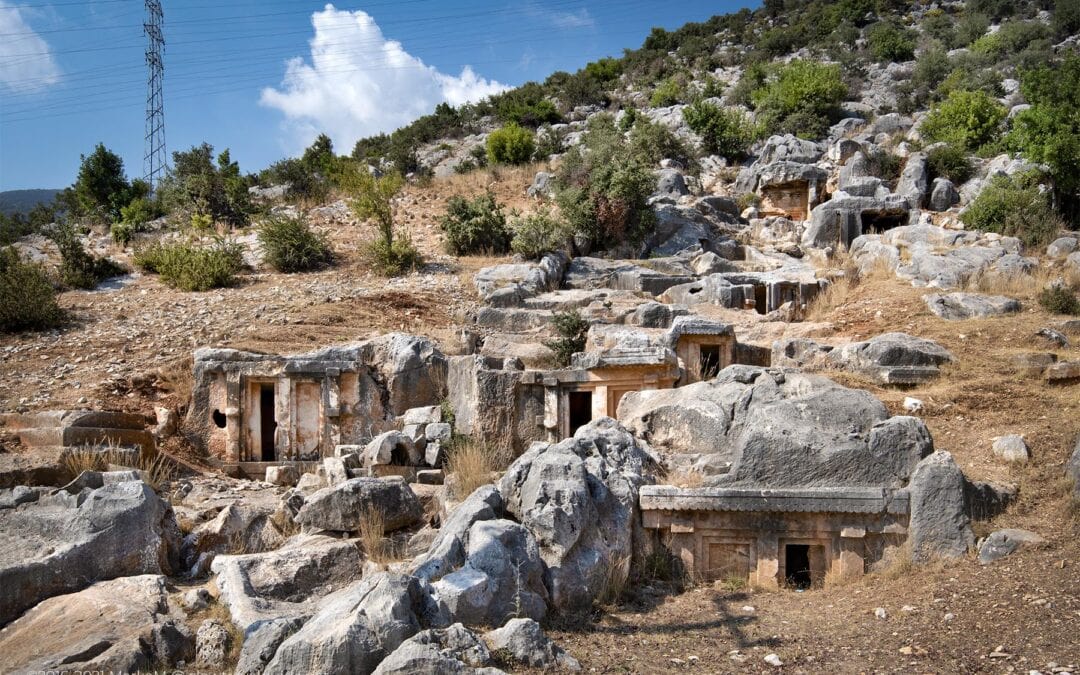An Idyllic Dive Into The Ancient Basilica
By Slowtravelguide
When it comes to ancient ruins, Limyra is a bit of an oddity. You might ask why? There are only tiny remains of this impressive ancient city. But when you see the submerged ruins of a basilica annexed to Colonnade Street, Limyra has a definite moment of awe.
If you find yourself near Finike, these alone are worth a detour, as they are effective competitors to Pamukkale’s overcrowded and over-commercialized “Cleopatra Pool.”
Limyra’s Historical Background
Historians believe that Limyra’s Lycian name Zẽmuri is derived from the Hittite word, but so far, no archaeological findings can be traced back to the Hittite period. However, they did find pottery fragments dating back to the 7th century BC on the site.
Judging from the type of domestic architecture in the northern part of the western town, the earliest settlement may have occurred in the 6th century BC.
Limyra was the residence of the local dynasty Perikle by the 4th century BC. The place was booming. At that time, the fortifications, terrace houses, a Heroon around the Acropolis, and about 400 funerary monuments distributed on 5 Necropolis were built.
Roman inscriptions referred to Limyra as a metropolis and had two votes as a member of the Lycian League. The history of the theatre and Roman baths can be traced back to this era.
After that, during the Byzantine period, the city became a bishopric, and the ruins of the Basilica and the Bishopric can still be seen today. By the 10th century, the seat of the Bishop had moved to nearby Phoinix, a port city known today as Finike. Limyra was abandoned for most of the 15th century and became its current village again in the middle of the 20th century.
Ptolemaion At Limyra
When Asia Minor, was invaded by the Galatians, Alexander the Great’s successor Ptolemy II supported the city and saved it. The citizens built a monument for their hero and called it Ptolemaion.
Today, most of it has been destroyed, but after completion, the Ptolemy Temple is a two-piece structure about 30 meters high. It has a cube bottom, decorated with reliefs depicting the war between Greek heroes and knights.
Ptolemaion Temple
On the top of the cube stands four life-size lion statues, protecting the building. The top part of the Ptolemaion Temple is an Ionian-style colonnade circular temple with a conical roof decorated with fish scales, crowned with leaves and snake sculptures.
Remains of the conical roof are still on site today.
Ptolemaion At Limyra Surrounded By Water
The Submerged Basilica And Colonnaded Street
The Byzantine wall spans the Ptolemaion, and you will be pleasantly surprised when you pass through the door leading to the other side of the wall.
The first impression at Limyra was not that exciting. The greenhouse surrounds the site, and most of the structure that can be seen from the entrance is not that impressive.
The Idyllic Environment At Limyra
When you discover the scenery behind the walls of the Ptolemaion, when the environment becomes idyllic, the situation changes.
This is the whole point of your visit to Limyra. Running water, submerged ruins and a lush environment. In the hot summer, here is where the locals swim. What a unique swimming pool they have!
Mr Martin Seyer, head of the Limyra excavation team, contacted us after we posted this post and pointed out that Limyra prohibits swimming.
Although we did not see any signs of support for this ban at the scene, we did support his efforts as an archaeologist to protect the submerged ruins from overzealous swimmers. If you are still keen on swimming, the beach of Finike is only a short drive away!
The Andron Experimental Archaeology In Limyra
A Walk Through Limyra
A Further walk visiting Limyra will bring you through the so-called experimental archaeology. Although we visited many ancient sites across Turkey, this was the first time we saw an information board with this phrase. The archaeologists even gave their building a name: Andron; this is the men’s room in the ancient house.
This attractive building, mainly made of wooden beams, is to gain insight into the exterior wall style of many Lycian rock tombs. It is believed that these facades imitate wooden buildings. After theoretical research on the model, this expertise was used to create a new space for Limyra’s archaeological mission.
What Looks Like A Creek Is A Submerged Colonnaded Street
The Excavations At Limyra
These archaeological activities have been ongoing for the past 50 years. During our visit, a team was excavating the area next to the monument built for Gaius Caesar.
The monument is one of Limyra’s strongest still-standing structures. Essentially, it was an empty tomb for the grandson and future heir of the Roman Emperor Augustus, who died in Limyra on February 21, 4 AD. The structure was once decorated with reliefs, some of which are now on display in the Antalya Archeological Museum.
The Theatre Was Only Partly Excavated, Four More Seating Rows Are Still Buried.
What To Expect
How To Get There: Private, rental car (check the map below)
Nearest Airport: Antalya Airport.
Parking: Yes.
Terrain: Easy.
Stroller: No.
Income: A small fee (museumpass is valid)
Facilities: No.
Best Time To Visit: All year, depending on the weather.
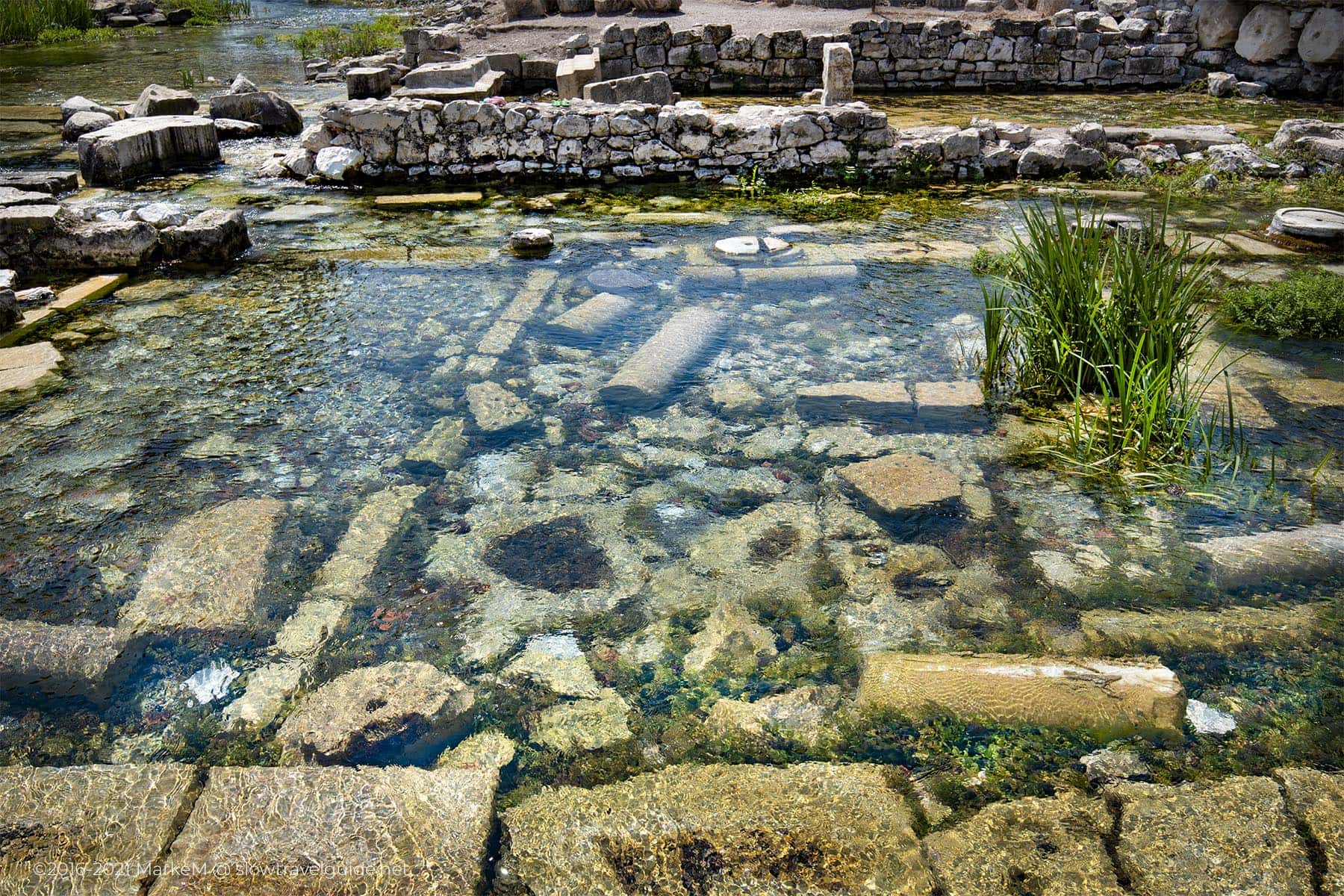
Theater and Roman Baths
Today, the ancient city of Limyra is divided into two by a road. The Roman Theatre sits on the other side of the road, right next to the Roman Baths. The horseshoe-shaped structure is independent, and its original building can be traced back to the 2nd or 1st century BC. In the 1st century AD, it has undergone serious changes after the earthquake caused severe damage to it.
According to the information board next to it, the theatre can accommodate approximately 20,000 spectators under the shade sail.
Today, the theatre is still partially buried, and the four rows of seats are still hidden under the soil.
Roman Baths Adjacent To The Theatre
Part Of Limyra’s Necropolis
Necropolis of Limyra
After your visit, don’t forget to go a little further in the direction of Arykanda. Before you reach Necropoleis in Limyra, you will see a sarcophagus.
The stone tombs are scattered on the mountain beside the road. Some of them are still half-buried, and we assume that there are more tombs hidden under the road. In any case, this is a good addition to your visit, if you miss it, it will be a pity.
Places Nearby
Rhodiapolis, 5 reasons to visit (10 km)
Myra, popular with Medusa selfies (20 km)
Where is Santa Claus? In Saint Nicholas church in Turkey! (20 km)
Arykanda, uncovering mosaics (22 km)
If you have any questions about a place, feel free to ask. You can send us a message through our contact page or leave a comment on our Instagram or Facebook pages.
You can also join our group Turkey Travel Photography on Facebook to share your lovely photos or experiences about Turkey.
Practical Information
If you need a few hours to get there, this may not be the type of site you plan to visit specifically, but if you happen to be in the Finike area, this place is definitely worth a visit, especially if you combine it with the nearby Rhodiapolis.
Limyra is easy to reach, and the road signs are relatively good. From Finike’s main road D400, follow the road leading to Elmalı next to Limyra. Depending on the time of your visit to Limyra, you will need to pay a small entrance fee. Ticket booths are not always open, so you may be lucky, especially if you plan to pass the season.
Places We Recommend
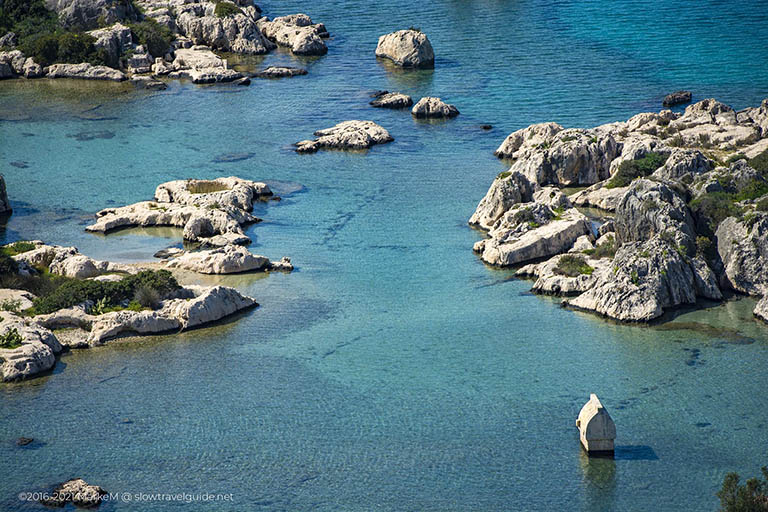
Kekova
This little archipelago in front of the Turkish coast near Kaş is like paradise on Earth. Not only nature is astounding but the history of this area is not only visible on land but also under the water. (Read More)
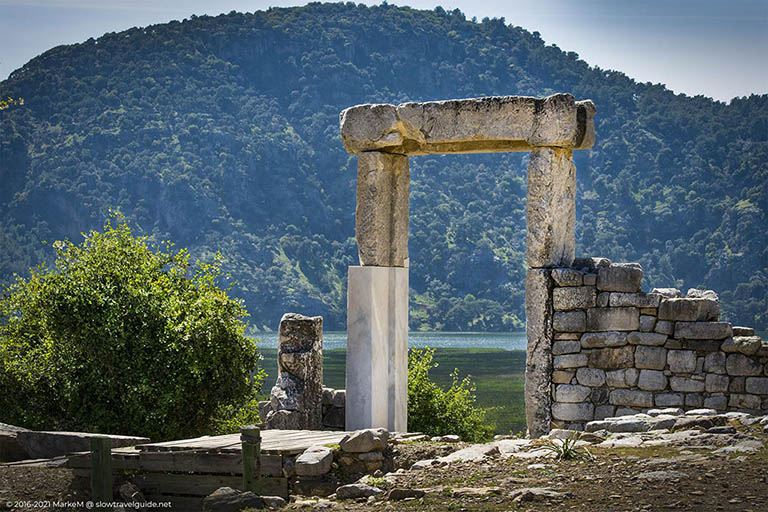
Kaunos
Near Dalyan, the ancient site Kaunos is known for its Lycian rock tombs carved out of the rocks overlooking the Dalyan river. An impressive sight and one of the major tourist attractions in the area. (Read more)
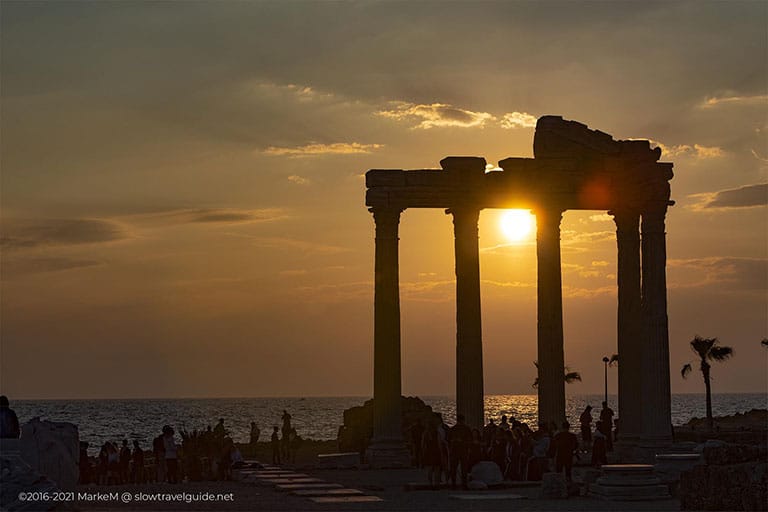
Side
Are you looking for a lot of different things in a holiday resort? Do you like to experience the cultural atmosphere, the charm of the old town, and the fashionable wine and delicacies at a romantic seaside dinner? If this sounds like your happy place, go to Side, Turkey! (Read more)
© 2016-2022 All rights reserved by slowtravelguide.net.
The content of this website is copyright protected and the property of slowtravelguide.net.No part of this website may be reproduced in whole or in part in any manner without the written permission of the copyright owner.
Copyright ©2016-2022 Tüm hakları saklıdır. Bu (slowtravelguide.net.) web sitesinin içeriği koruma altındadır ve slowtravelguide.net.Buradaki hiçbir içerik (yazı,fotoğraf,video vb.) izinsiz olarak kopyalanamaz, alıntı yapılamaz,başka yerde yayınlanamaz.

